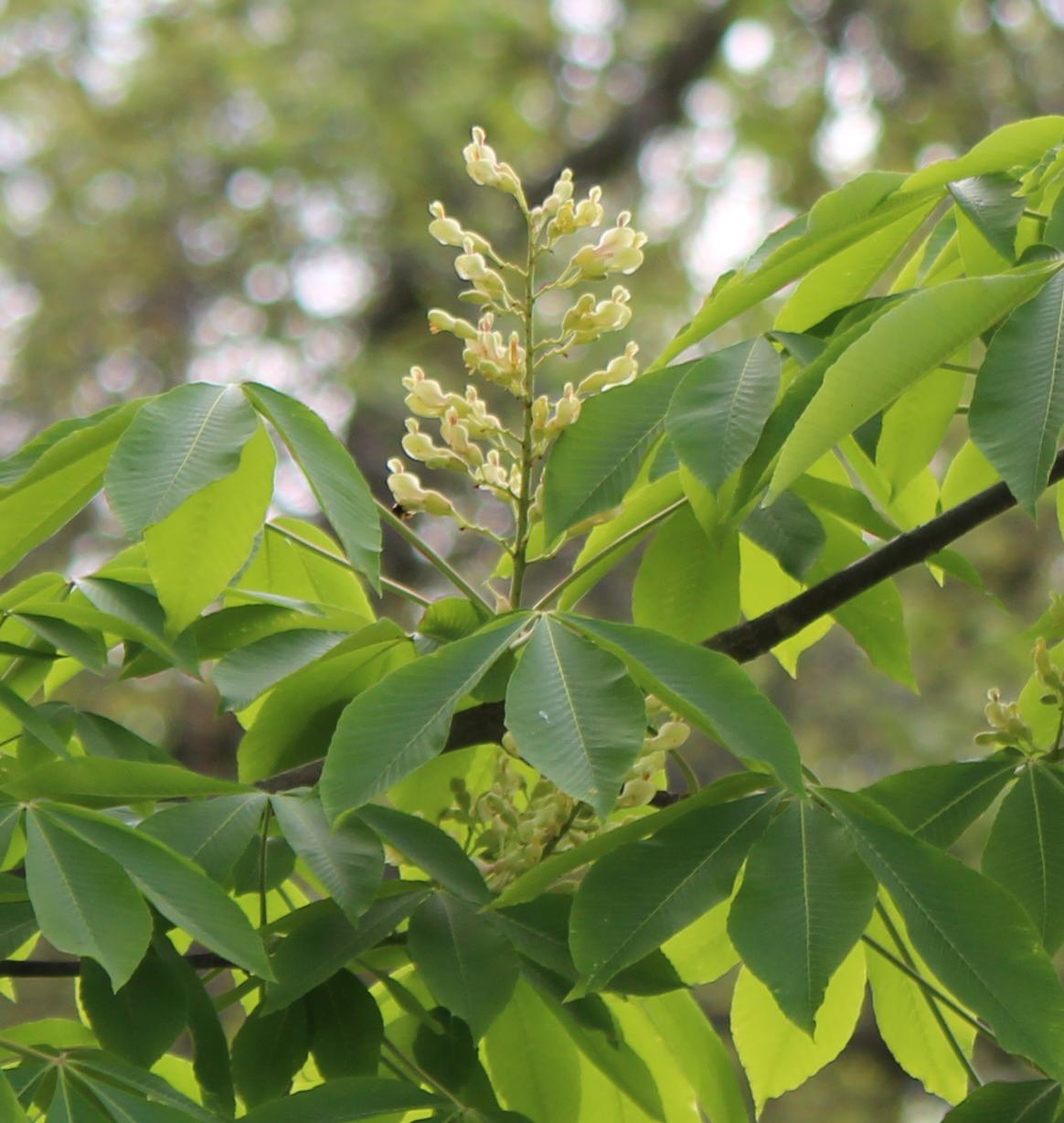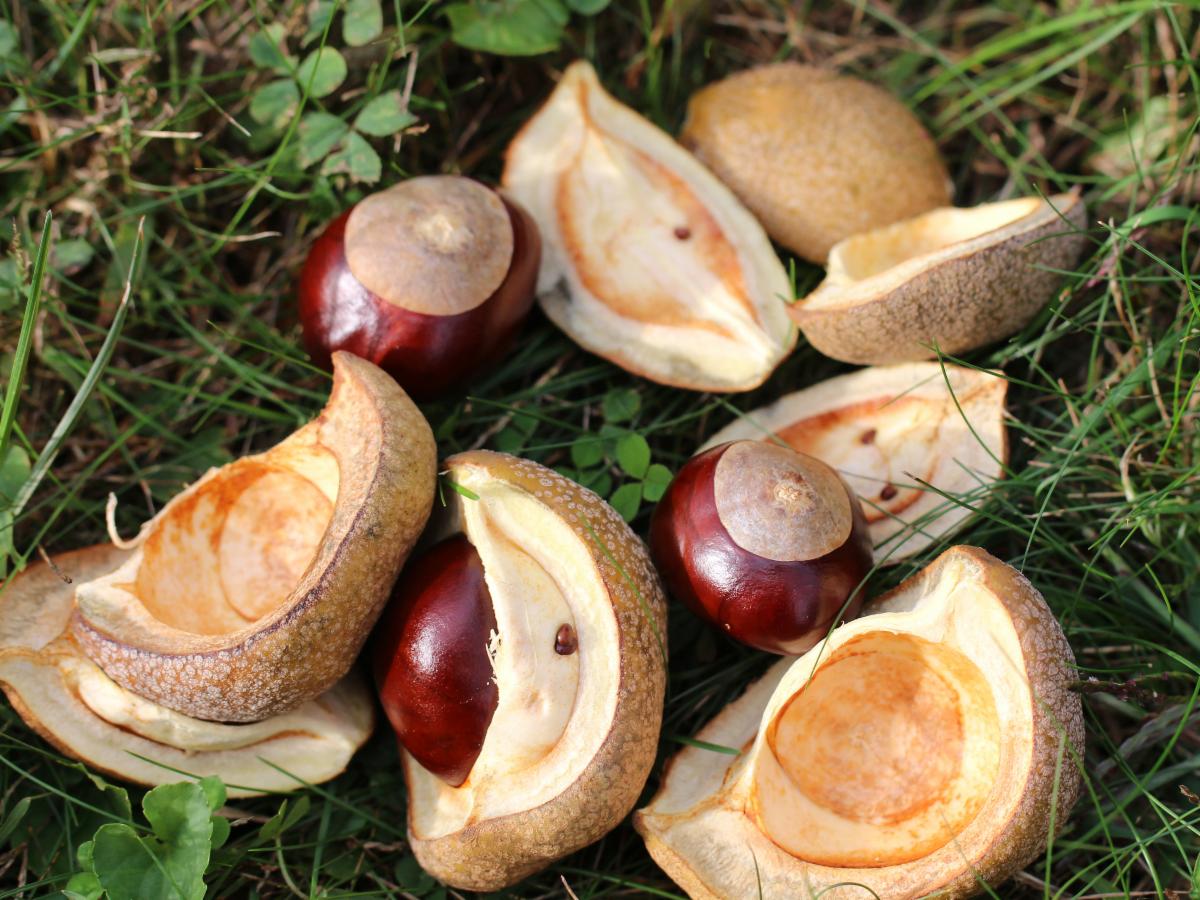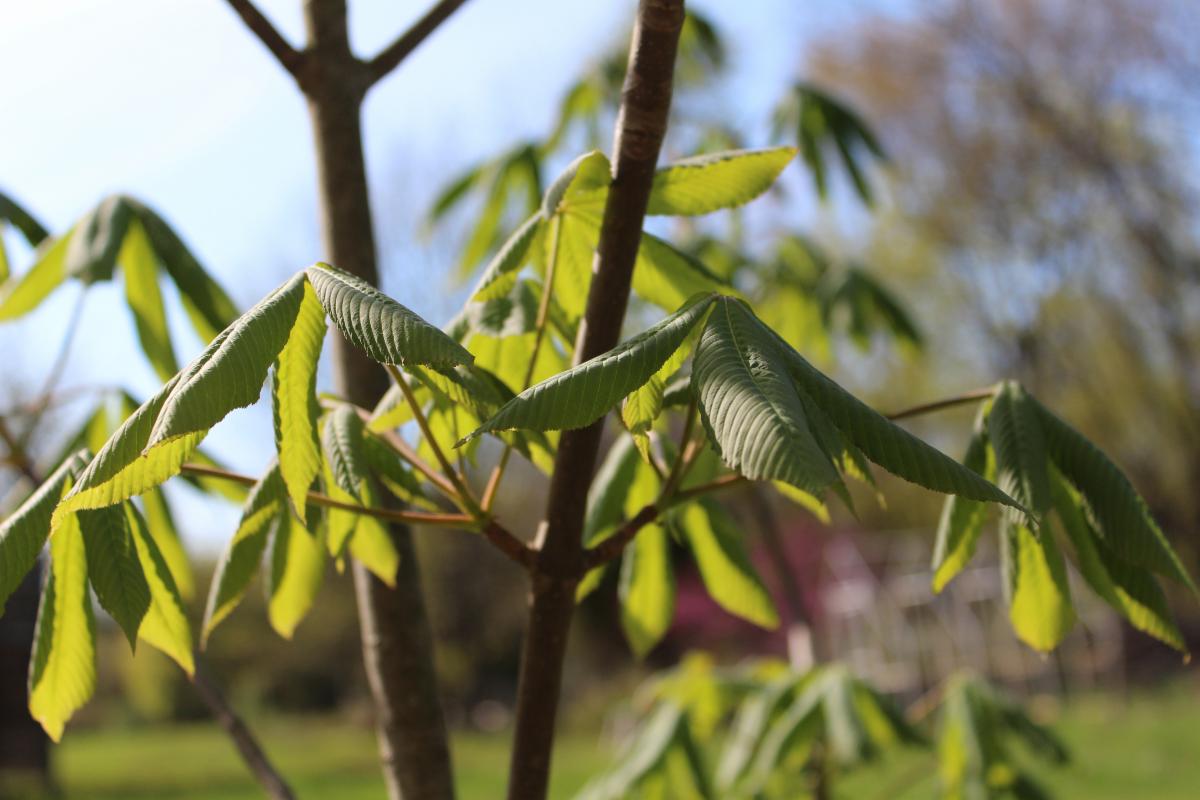Plant Profile: Yellow Buckeye (Aesculus flava)!
The best time to plant a tree was twenty years ago.
The second best time is now.
-Chinese ProverbFor Arbor Day this year, we are announcing our Tree of the Year: Yellow Buckeye (aka Sweet Buckeye), Aesculus flava! The most northeastern of our native Buckeye trees, this truly magnificent tree can grow to a stately 75 feet tall (and 30-50' wide). It produces beautiful pyramids of yellow flowers in the spring that also provide vital food for hummingbirds and pollinators. They are quite the favorite of bumble bees (Bombus spp.), Mason Bees (Osmia spp.), Long-horned bees (Synhalonia spp.), and Anthophorine bees (Anthophora spp). It is also the host plant of the American Dagger Moth (Acronicta americana). Some folks (including the widely recognized woody plant expert Michael Dirr, and even the folks at the Ohio Division of Natural Resources!) consider this tree quite superior to the more widely-known Ohio Buckeye (Aesculus glabra).

Yellow Buckeye (Aesculus flava) flowers are eye-catchingly beautiful and provide an important food source for native pollinators.
The large pear-shaped seed husks split in fall to reveal a truly enormous dark-brown seeds with a large lighter-brown spot: the 'Buckeye' they are named for, due to the supposed resemblance to a deer's eye. Since Colonial times, there have been folks who carry a 'buckeye' in their pocket for good luck.

The spongy husks break easily to reveal large, attractive (inedible) seeds that you can plant right away.
For propagation, these seeds must be planted right away - despite their size, they dry out very easily. When they germinate the following spring, these fat seeds push out a tap root and spout quite vigorously. Young plants should be kept evenly moist until the tap root gets well-developed, but after after a few years the plants will be moderately drought tolerant (an advantage shared by most tap-rooted plants). The tree itself makes a lovely shade tree with its large palmately compound leaves. If conditions are right in the fall, the leaves turn a lovely yellow/orange before they fall. These trees enjoy acid soil and are both tolerant to growing near black walnut trees (Juglans nigra) and near roads, as they are moderately salt tolerant. They are also generally deer-resistant. Plant these beautiful trees where you can admire the flower display in spring, but away from driveways and walkways (to avoid the falling fruits).

Yellow Buckeye leaves are beautifully palmate, and give the trees attractive character even when not in bloom.

Randi V.W. Eckel, PhD
